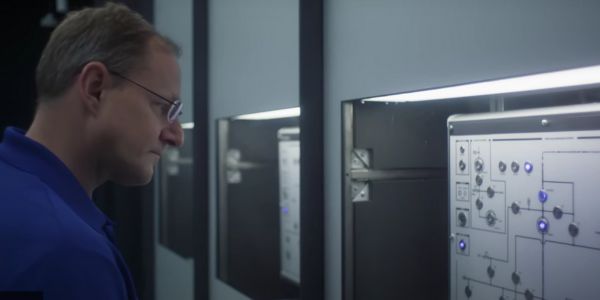Yorktown Heights, New York – On June 10, 2025, IBM (NYSE: IBM) announced a transformative roadmap to deliver IBM Quantum Starling, the world’s first large-scale, fault-tolerant quantum computer, by 2029. To be built at a new Quantum Data Center in Poughkeepsie, New York, Starling is projected to perform 20,000 times more operations than today’s quantum computers, executing 100 million quantum operations with 200 logical qubits. According to IBM, representing Starling’s computational state would require the memory of over a quindecillion (10^48) of the world’s most powerful supercomputers, marking a monumental leap in computational capability.
Breaking Barriers in Quantum Computing
Quantum computing has long been hampered by high error rates due to the fragility of qubits, the basic units of quantum information. IBM’s Quantum Starling aims to overcome this with a fault-tolerant architecture, utilizing quantum low-density parity check (qLDPC) codes. These codes reduce the number of physical qubits needed for error correction by approximately 90% compared to traditional codes, such as the surface codes used by competitors like Google. This efficiency enables Starling to run complex quantum algorithms reliably, unlocking applications in drug development, materials discovery, chemistry, and optimization.
“IBM is charting the next frontier in quantum computing,” said Arvind Krishna, IBM Chairman and CEO. “Our expertise across mathematics, physics, and engineering is paving the way for a large-scale, fault-tolerant quantum computer — one that will solve real-world challenges and unlock immense possibilities for business.”
Watch Video on YouTube about Fault-Tolerant Quantum Computer
Key Features of IBM Quantum Starling
Starling’s architecture is designed to meet critical criteria for a practical quantum computer:
- Fault Tolerance: Suppresses errors to ensure reliable execution of complex algorithms.
- Logical Qubit Operations: Prepares, measures, and applies universal instructions to logical qubits.
- Real-Time Error Correction: Decodes measurements from physical qubits to correct errors dynamically.
- Modularity: Scales to hundreds or thousands of logical qubits for more complex computations.
- Efficiency: Executes meaningful algorithms with realistic physical resources, minimizing energy and infrastructure demands.
IBM’s two new technical papers, building on a March 2024 Nature publication, detail how qLDPC codes and efficient decoding methods enable this architecture. Starling will use 200 logical qubits to perform 100 million quantum operations, laying the foundation for the more advanced IBM Quantum Blue Jay by 2033, which will execute 1 billion operations with 2,000 logical qubits.
IBM’s Quantum Roadmap: Milestones to 2029
IBM’s roadmap outlines a clear path to Starling with three key processors:
- 2025: IBM Quantum Loon – Tests qLDPC code components, including “C-couplers” for connecting qubits over longer distances within a chip.
- 2026: IBM Quantum Kookaburra – A modular processor integrating quantum memory and logic operations, the building block for scalable fault-tolerant systems.
- 2027: IBM Quantum Cockatoo – Connects Kookaburra modules with “L-couplers,” enabling a distributed architecture without requiring impractically large chips.
These milestones ensure IBM’s iterative progress toward a modular, scalable, and error-corrected quantum computer by 2029.
Must Read: Apple WWDC 2025: Top Announcements, iOS 26, and Apple Intelligence Unveiled
Transforming Industries
IBM Quantum Starling is poised to revolutionize multiple sectors. In drug development, it could accelerate the discovery of new treatments by simulating molecular interactions at unprecedented scales. In materials science, it could design advanced materials for batteries, solar cells, or sustainable energy solutions. For optimization, Starling could solve complex problems in logistics, financial risk analysis, and cybersecurity, potentially reducing computation times from billions of years on classical computers to mere seconds.
Poughkeepsie: The Quantum Epicenter
The new IBM Quantum Data Center in Poughkeepsie, New York, will be the hub for Starling’s development and operation. Already hosting IBM’s Quantum Heron processor, which achieved a 16x error rate reduction and 25x speed increase, the facility underscores IBM’s leadership in quantum infrastructure. The data center will support Starling’s modular design, ensuring scalability and accessibility for businesses and researchers worldwide.
The Competitive Race
IBM faces competition from companies like Google, IonQ, and QuEra, which are also pursuing fault-tolerant quantum systems. Google relies on surface codes, while QuEra explores neutral atom-based approaches. IBM’s qLDPC codes and superconducting architecture, however, offer a more efficient and scalable path, avoiding the need for an impractical number of physical qubits. Posts on X reflect enthusiasm for IBM’s roadmap, with many highlighting its potential to redefine computing by 2030.
A Quantum Future
IBM’s announcement marks a pivotal moment in the quest for practical quantum computing. With a clear roadmap, cutting-edge error correction, and a focus on scalability, IBM Quantum Starling could usher in a new era of innovation. As IBM progresses toward 2029, the Poughkeepsie Quantum Data Center will be a focal point for researchers, businesses, and policymakers eager to harness quantum technology’s potential.
For the latest updates on quantum computing and technology breakthroughs, visit The Interview Times.

